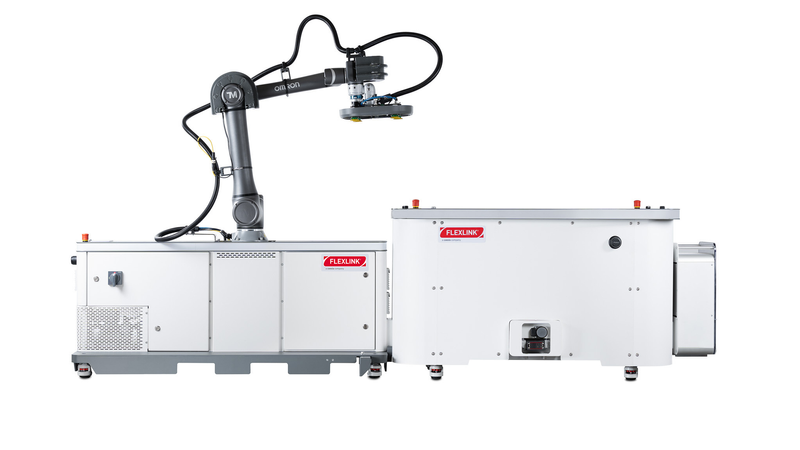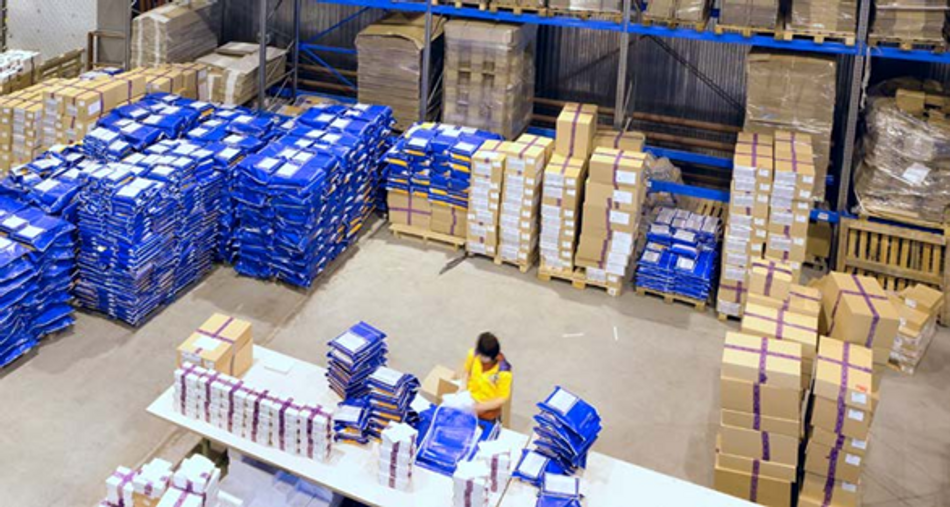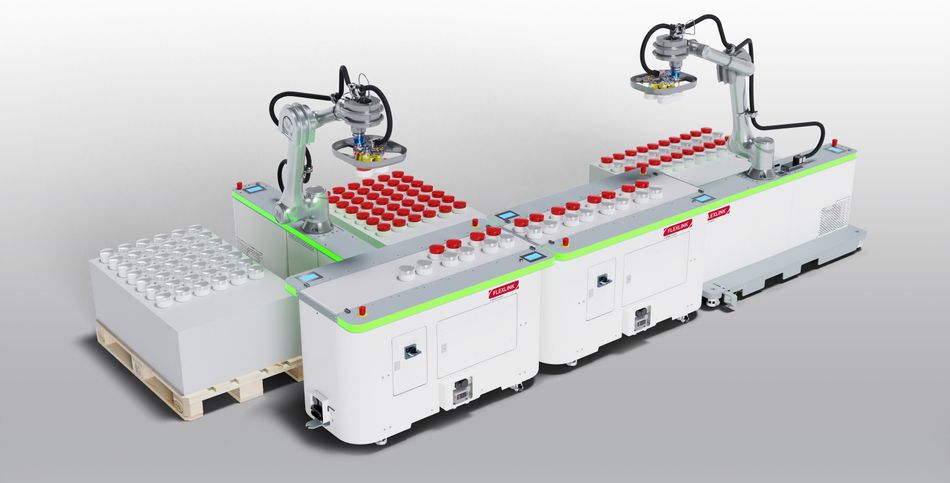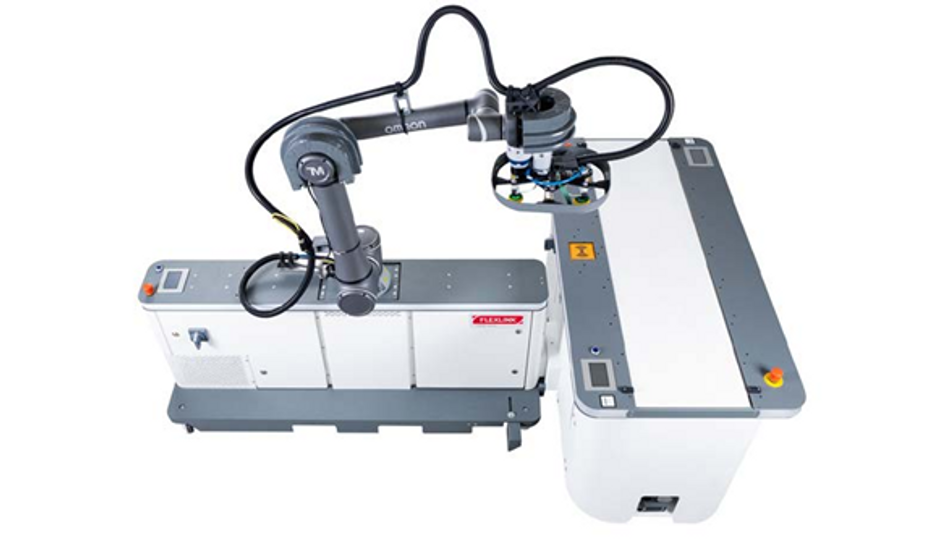Modular Automated Packing System Offers New Flexibility and Agility
An automated packing system leveraging modular components and intuitive software to address labor-intensive challenges, optimize operational efficiency, and streamline product handling processes.
In a warehouse or production facility, packing refers to the process of preparing goods and products for shipment or storage by placing them into appropriate containers or packaging materials. Packing presents many challenges that can significantly impact operational efficiency and overall productivity. One primary concern is the traditional toll it takes on the human-labor force. The labor-intensive nature of packing tasks can lead to workforce fatigue and decreased morale, potentially affecting safety and productivity.
This article explores the need and benefits of automated packing solutions to streamline warehouses and production facilities, reduce time to delivery and increase safety. It highlights the features and applications of BRIXX®, a new automated packaging solution with modular components and click-and-play-based software.
Challenges in Packaging
To understand the challenges in packing, it’s crucial to understand the stages of packaging and packing along the ‘product to pallet’ line. A product packaged in its for-consumption form is known as its primary packaging. Secondary packaging is used to group a certain number of products to create a stock-keeping unit, commonly referred to as a SKU. This helps the handling of smaller products and also adds a layer of protection for them during transport. Tertiary, bulk, or transit packaging is used to group larger quantities of SKUs to transport them from point A to point B (e.g. from the production facility to the point of sale). An example of tertiary packaging is a stretch-wrapped pallet containing a number of cardboard boxes (secondary packaging) to enable efficient product shipping.
The challenges in automating packing lie at the secondary and tertiary stages because the conventional method of manual packing is costly and time-consuming due to the need for a large amount of labor. Complex packing requirements such as multiple product types and fragile items increase this labor need. This can then be further increased by seasonal demand.
BRIXX®: An Innovative Packing Solution
An example of an innovative solution for packing automation is BRIXX®, a solution from FlexLink, a Coesia company. BRIXX® is a modular, click-and-play software-based solution that reduces manual operations and provides an easy way to customize the process in co-packing lines. The solution was launched at Interpack 2023 and can be seen live until 10 May.
With BRIXX®, companies can automate operations for various products, including packages, cartons, and trays. The flexible system provided by Flexlink is scalable to meet varying production needs while remaining affordable and user-friendly. This is possible through advanced mobile conveyor modules and the use of robots to automate repetitive manual packing and co-packing processes.
Modular approach to packing
The BRIXX® system comprises conveyor and robot modules that work with an intuitive software overlay. The modules are easy to move, connect, and power and can be configured in various ways to suit the packing needs of thier location. They are also equipped with visual indicators for operational status, a built-in vision system, and automatic calibration. The modules use the same power connection, simplifying their setup and maintenance.
Packing facilities can leverage the modularity and ease of set-up of BRIXX® to become a hyper-agile packing line. A facility may set up one configuration of BRIXX® for one packing task, such as palletizing, and then quickly reconfigure to enable them to complete a different type of task, such as labeling. This modular ‘super power’ means packing facilities can offer more services to their customers and manage unexpected requests rapidly.
The robotic arm module has a moveable, connectable base with a multi-degree robotic arm with a single or multi-pick vacuum gripper. The conveyor belt line is a simple unit with a speed-adjustable conveyor belt that can link to other units to form continuous packing lines.
The flexible combination of BRIXX® modules enables various operations with the same hardware and software. Production companies or co-packers can automate packing actions such as pick-and-place, mixing, labeling, re-labeling, palletizing, or de-palletizing for increased productivity and efficiency. Product transformations, such as case forming, tray forming, and carton closing, are optionally available.
BRIXX® Software
The BRIXX® software is designed to be user-friendly and easy to operate. It has drag-and-drop functionality that enables the rapid setup and adjustment of the system. A functioning automated packing line can be set up with the assistance of step-by-step visual instructions. Additionally, the software provides real-time production monitoring through overall equipment effectiveness (OEE) indicators and alarms. Its human-machine interface also allows you to plan for ordinary and extraordinary maintenance.
Hence, the user can rearrange the robotic modules and change instructions and configurations in the code according to the hardware setup. The system supports up to 5 different conveyor layouts.
The BRIXX® software also features a built-in SKU management system with a selector guide, allowing the user to manage inventory. It also features MES-ERP integration tools thanks and an optional unified name-space MQTT open interface to support inventory management for packaging and labeling units.
The system also allows up to 4 user levels to help set up various permissions and restrictions on controls. It has real-time monitoring features that include alarms and OEE indicators. Moreover, remote assistance packages and an integrated HMI system are helpful for preventative maintenance and planning.
The software features PackML standard support backup and restores features in IPC for additional security. Each unit has a dedicated software license and an additional Android application to enhance functionality for packaging line operators.
The BRIXX® solution enables companies to quickly adapt to the increasing demand for automation to increase efficiency and lower costs. The system’s unique modularity ensures companies can lower thier risk while being prepared for seasonal and consumer changes.
Applications
The BRIXX® system is suitable for many standard packing applications required by warehouses and other packing facilities. Common applications include adding boxes to pallets, known as palletizing, removing boxes from pallets, adding SKUs to other tertiary packaging, and labeling and relabelling.
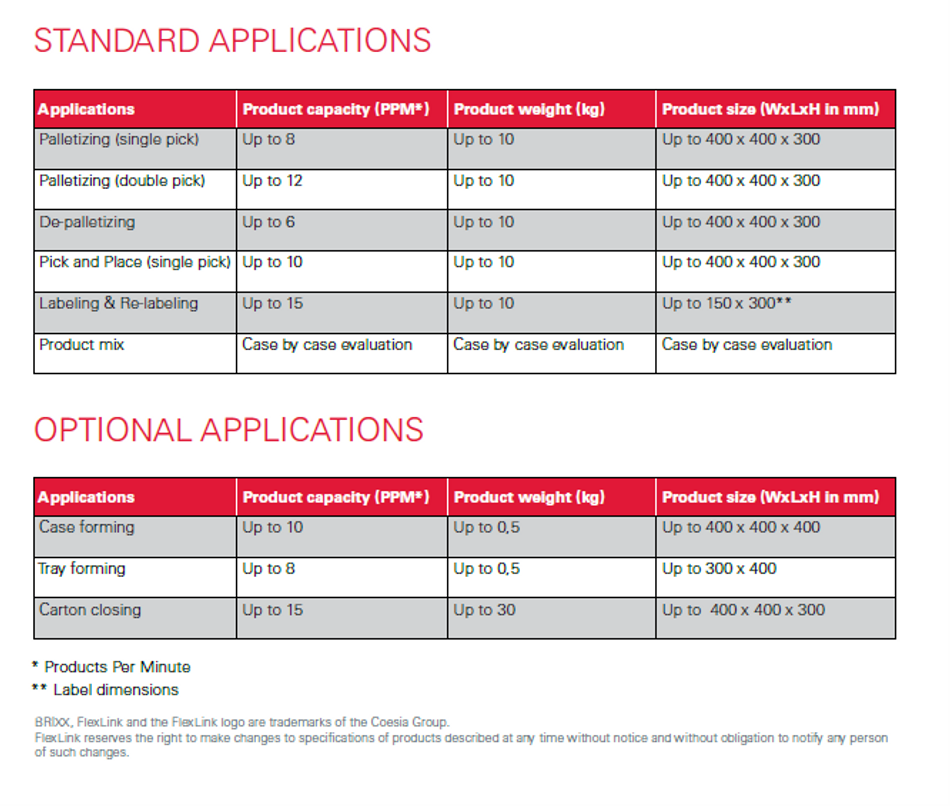
Conclusion
Automated packing solutions can increase efficiency and reduce costs and material waste by contributing to reduced packaging time and a company's sustainable footprint. FlexLink's BRIXX® solution combines robot modules with intuitive software to automate secondary and tertiary packing applications.
Learn more about BRIXX®
Flexlink is launching the BRIXX® solution during Interpak 2023. Visit them at their stand in Hall 6/D31.

